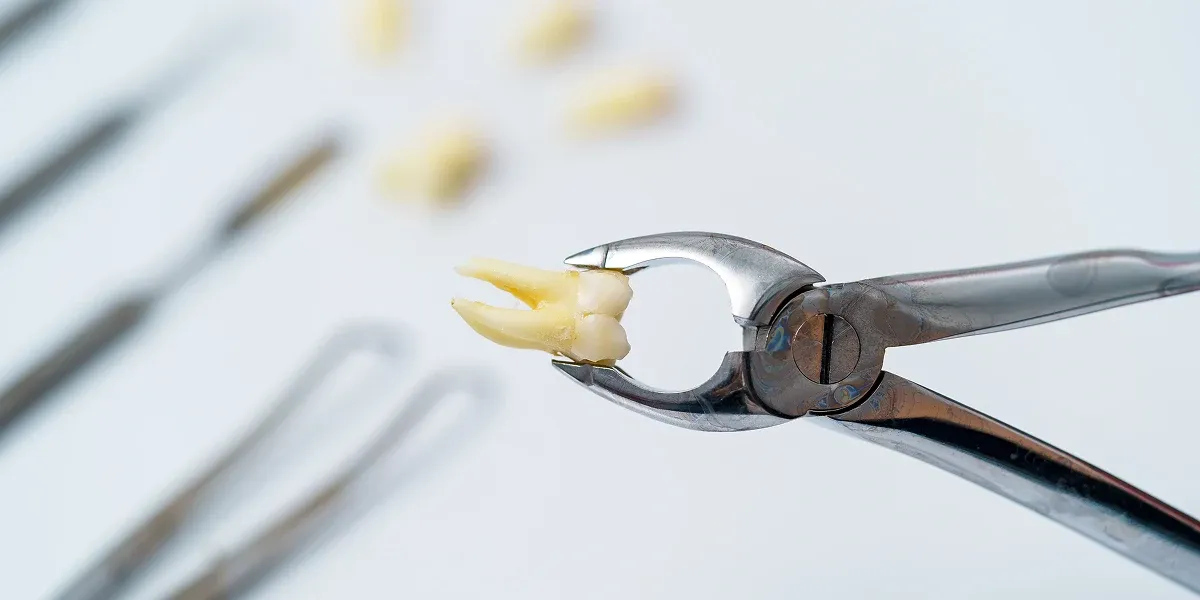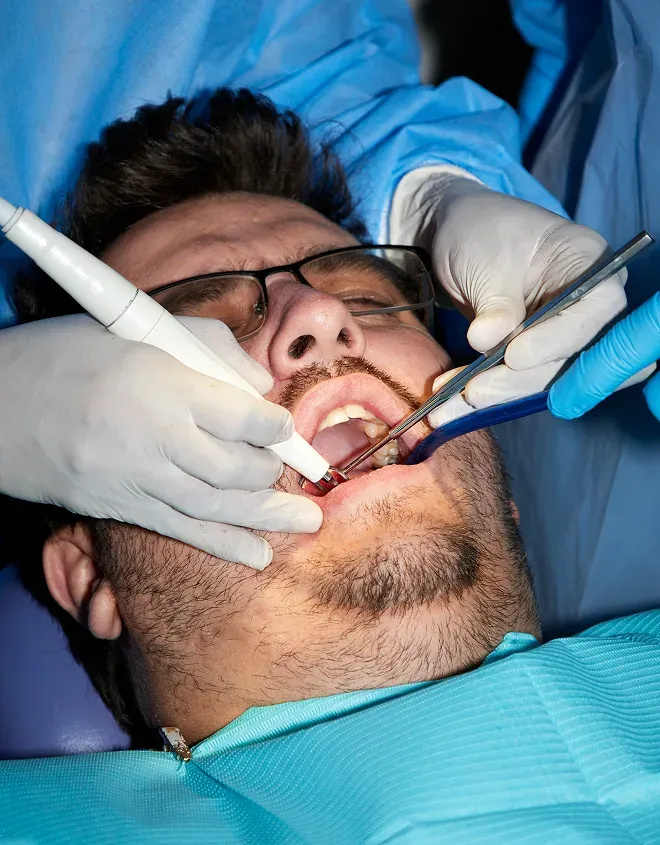Wisdom Teeth Removal: Recovery Tips for a Smooth Healing Process
by Dr. Labeeb
13 May 2025

Thinking about getting your wisdom teeth removed can bring up a lot of questions. You might wonder how much it will hurt, how long you will be out of work, or what foods you can actually eat. Maybe you've heard different stories from friends or family, and you are not sure what to believe. The good news is, a smooth recovery is possible with the right care and planning. This guide gives you real, practical steps you can follow to heal comfortably after wisdom teeth removal.

What Happens Right After Wisdom Teeth Removal?
Once the procedure is complete, the dentist or oral surgeon usually places gauze over the extraction sites. This helps to control bleeding and start clot formation. You will likely feel numb for a few hours due to anesthesia. Here are a few things you should know immediately after getting your wisdom tooth removed.
- Expect bleeding for the first few hours.
- You may feel swelling starting within a few hours.
- Pain can increase after the numbness wears off.
Understanding these stages helps you prepare both physically and mentally.
The First 24 Hours: Setting Up Your Recovery
The first 24 hours after surgery are critical. The choices you make now impact how quickly and safely you heal.
Bite Down on Gauze
Keep pressure on the gauze pads for at least 30-45 minutes. Replace them as needed. Bleeding should decrease after a few hours.
Manage Bleeding Properly
If bleeding continues heavily, dampen a fresh piece of gauze, place it over the extraction site, and bite down firmly. A tea bag can also help. The tannins in tea promote clotting.
Ice Application
Use an ice pack on your cheek near the surgery area. Apply it for 20 minutes on, 20 minutes off. This helps reduce swelling and discomfort.
What to Eat
Choose soft foods that require minimal chewing. Good options include:
- Applesauce
- Mashed potatoes
- Broth-based soups
- Yogurt
Avoid using straws to prevent dislodging the blood clot.

Pain Management
Pain usually peaks around 48 to 72 hours post-surgery. Managing it effectively reduces overall recovery time.
Medications
Take prescribed pain relievers as instructed. If over-the-counter options are recommended, ibuprofen often works better than acetaminophen because it reduces both pain and inflammation.
Positioning
Keep your head elevated with pillows, even while sleeping. Lying flat can make bleeding worse and prolong swelling.
Activity Level
Stay mostly at rest during the first 48 hours. Avoid bending over, heavy lifting, or intense movement. Physical exertion can dislodge clots and cause dry socket.
Swelling and Bruising
Swelling is normal and often peaks by day three. To manage swelling:
- Continue applying ice packs during the first 24-36 hours.
- After 36 hours, switch to warm compresses to encourage blood flow and faster healing.
Bruising may appear around your cheeks or neck. This is also normal and usually resolves within a week.
Cleaning Your Mouth After Surgery
Cleaning your mouth the right way is crucial. Mistakes here can cause infections or delayed healing.
First 24 Hours
Avoid rinsing, spitting, or brushing near the surgical area. These actions can dislodge the clot.
After 24 Hours
- Begin gently rinsing your mouth with warm salt water (1/2 teaspoon of salt in 8 ounces of water) after meals and before bed.
- Do not rinse vigorously.
- Brush your other teeth as usual but be very gentle around the surgical sites.
Eating Guide for the First Week
Eating the wrong foods can cause unnecessary pain or even reopen the wound.
Days 1-3
Stick to:
- Smoothies (without a straw)
- Mashed vegetables
- Scrambled eggs
- Blended soups
Days 4-7
- Gradually add soft solid foods:
- Soft pasta
- Pancakes
- Finely shredded chicken
Avoid crunchy, hard, spicy, or very hot foods until your dentist confirms that healing is well underway.
Activities to Avoid During Recovery
Many patients accidentally slow their healing by doing things they think are harmless like:
- Smoking or vaping: Both delay healing and increase infection risk.
- Drinking alcohol: It can interact with medications and slow healing.
- Heavy exercise: Raises blood pressure, causing bleeding or dry socket.
- Skipping medications: Increases pain and infection risk.
Dry Socket: How to Recognize and Prevent It
Dry socket is a painful condition where the blood clot becomes dislodged, exposing the bone and nerves.
Symptoms include:
- Severe pain a few days after surgery
- Bad breath or unpleasant taste in the mouth
- Visible bone at the extraction site
Prevention Tips
- Follow all rinsing instructions carefully.
- Avoid straws completely for at least one week.
- Stick to soft foods and avoid crunchy ones.
- Do not smoke or vape.
If you suspect dry socket, contact your dentist immediately. They can treat it and relieve the pain.
What to Do If You Experience Complications
Most patients heal without problems. Still, be aware of warning signs that need quick attention.
Call your dentist if you experience:
- Fever above 100.4°F
- Pus draining from the extraction site
- Persistent numbness after anesthesia wears off
- Swelling that gets worse after the third day
Traveling or Returning to Work After Wisdom Teeth Removal
Recovering fully before resuming daily activities helps avoid setbacks. It is important to plan travel and work returns carefully based on how your body feels and the advice of your dentist.
When You Can Travel
Short local travel by car is usually fine after 48 hours if you feel comfortable and are not taking heavy painkillers that could impair alertness. Avoid long trips that could delay access to your dentist if problems occur. Flights should be avoided during the first week, as cabin pressure changes can cause pain and may disrupt healing. Always consult your dentist before planning travel.
When You Can Work
For desk jobs, many patients can return after three to four days if pain and swelling are manageable. Monitor yourself carefully on the first day back. If your work involves speaking frequently, you may need extra time to avoid strain. For physically demanding jobs, it is safer to wait at least a full week. Heavy lifting or strenuous movement can reopen the surgical sites and cause complications. Always clear your return to work timeline with your dentist.
Follow-Up Appointments
Follow-up appointments are essential to make sure your recovery is on track. Skipping them can lead to unnoticed complications.
Most dentists will schedule a visit around seven days after surgery. During this appointment:
- Stitches may be removed if non-dissolvable material was used.
- The healing process is checked to ensure no infection or dry socket has developed.
- Additional instructions for eating, cleaning, and returning to normal activities are given.
Attending this appointment helps avoid surprises and makes sure that your mouth is healing properly.
Tips for Long-Term Oral Health After Wisdom Teeth Removal
Recovery does not end once the pain fades. Long-term oral care prevents future problems and protects the other teeth.
Brush and Floss Regularly
Use a soft-bristled toothbrush to clean teeth gently. Be consistent with flossing but avoid snapping floss between teeth, as this can irritate sensitive gum tissue.
Regular Dental Checkups
Make appointments every six months for routine cleanings and evaluations. These visits help detect small problems before they grow into bigger issues.
Pay Attention to Changes
After recovery, stay alert to any signs of new pain, swelling, or shifting teeth. Changes could signal infections, cysts, or other complications related to wisdom tooth extraction areas. Early evaluation by a dentist can prevent more serious problems.
Conclusion
Recovering from wisdom teeth removal does not have to be difficult. With the right steps, you can avoid major issues and heal smoothly. Follow clear, actionable advice, listen to your body, and contact your dentist if something feels wrong.
If you have questions or need personalized advice after your wisdom teeth removal, our team is here to help. Contact us today to book a consultation or get support during your healing journey.
Contact your Dentist today at Studio city Dental, to learn more about recovery tips for a smooth healing process after wisdom teeth removal.
Resource:
3D Dental Scans vs. Traditional X-Rays: What’s the Difference?
Share This:
Disclaimer
*This media/content or any other on this website does not prescribe, recommend, or prevent any treatment or procedure. Therefore, we highly recommend that you get the advice of a qualified dentist or other medical practitioners regarding your specific dental condition. *

